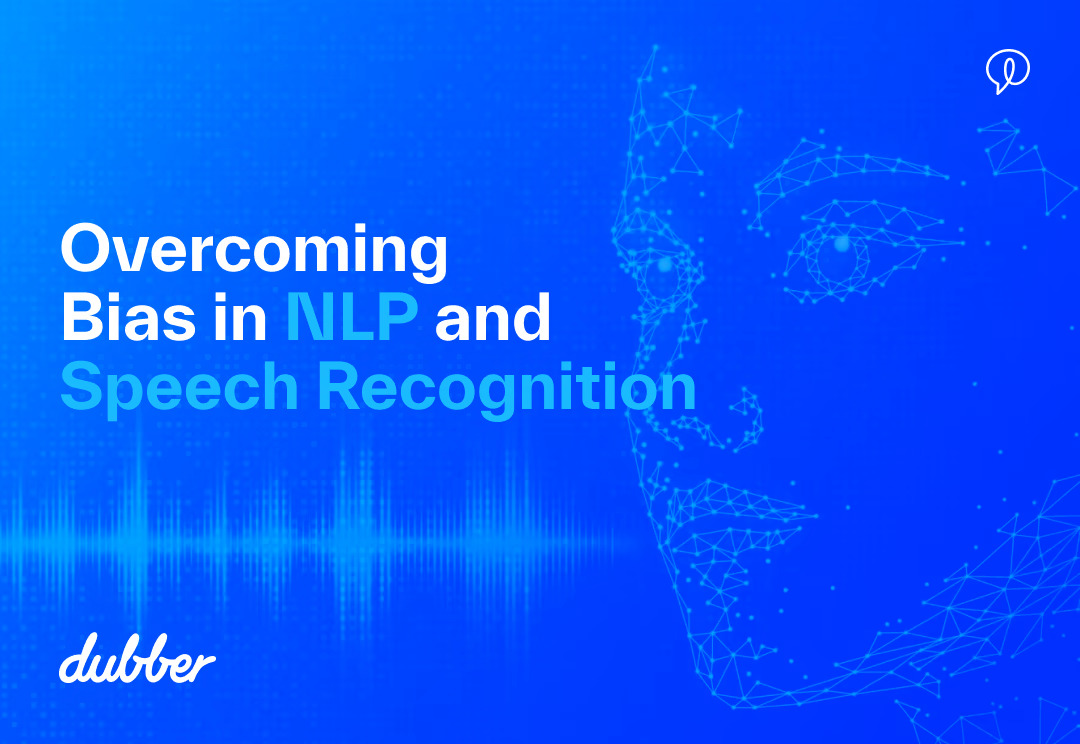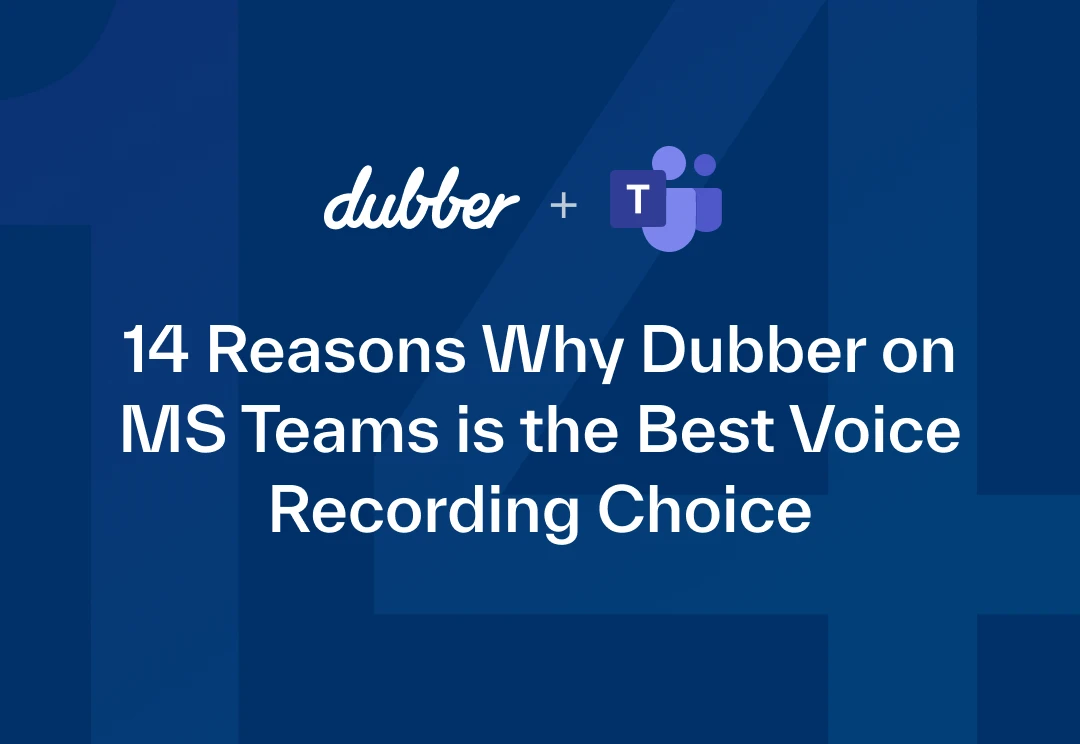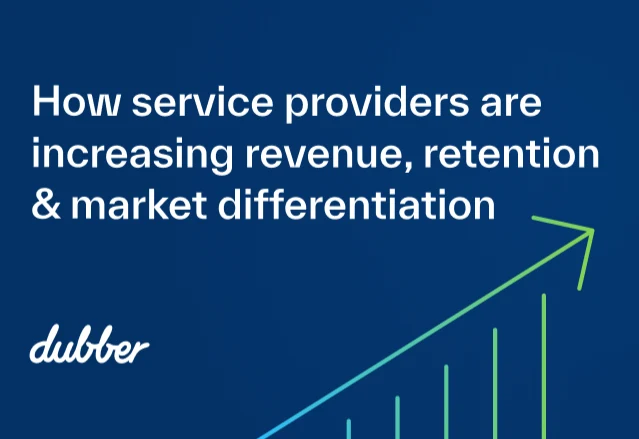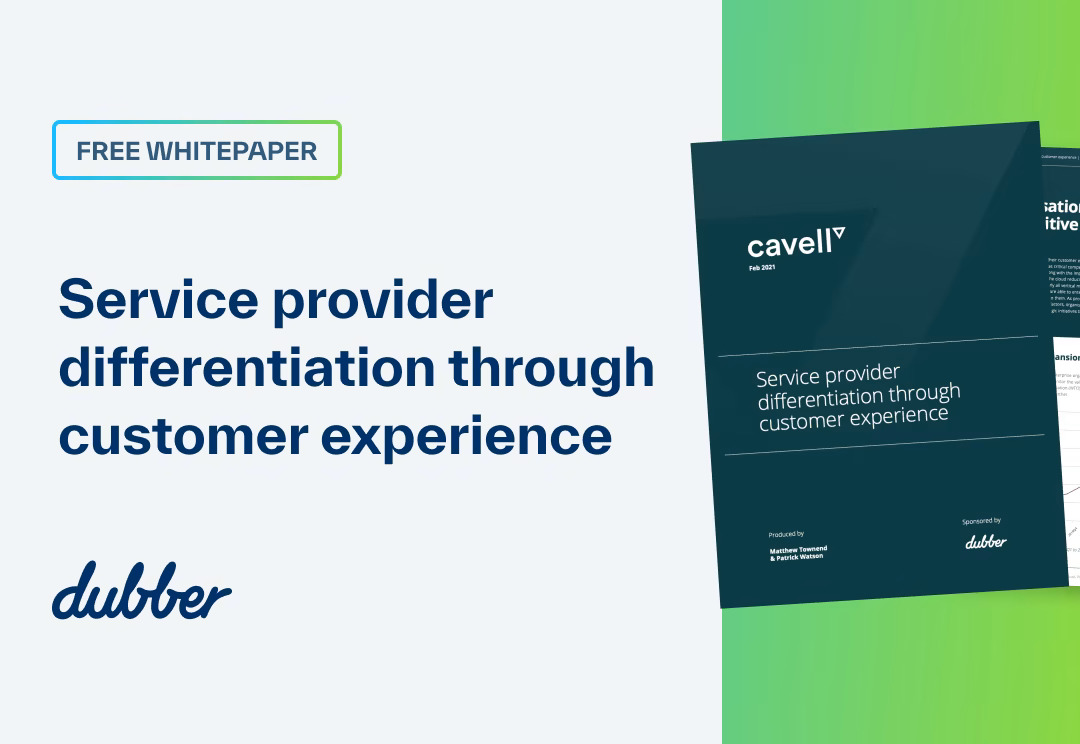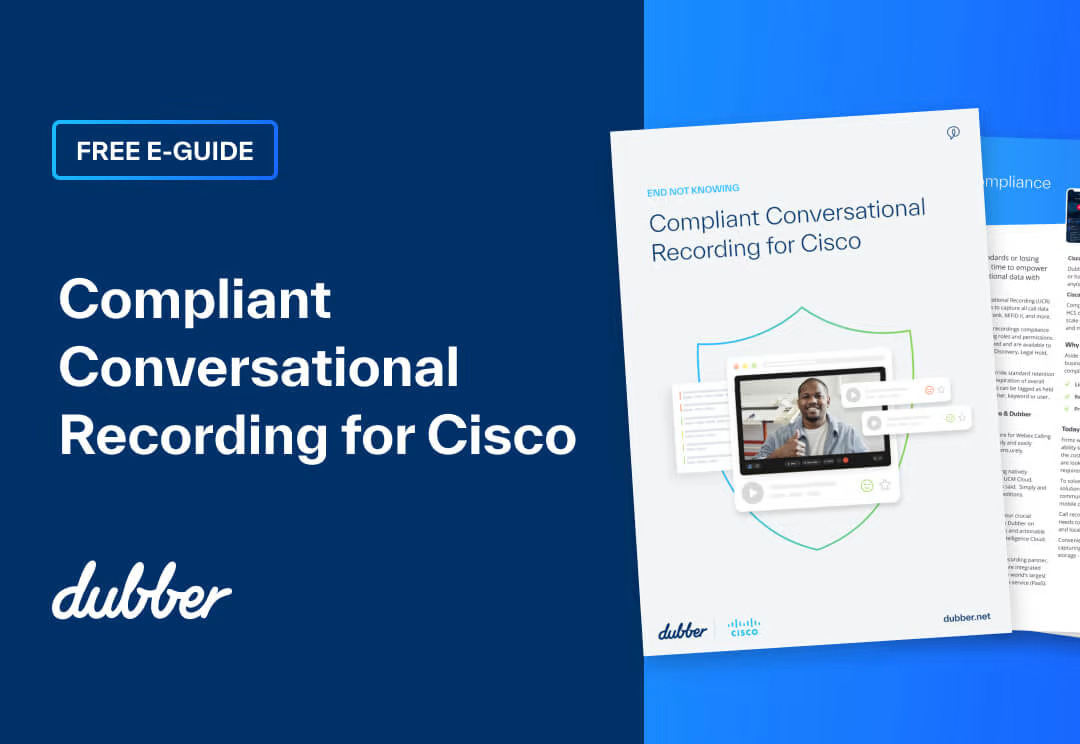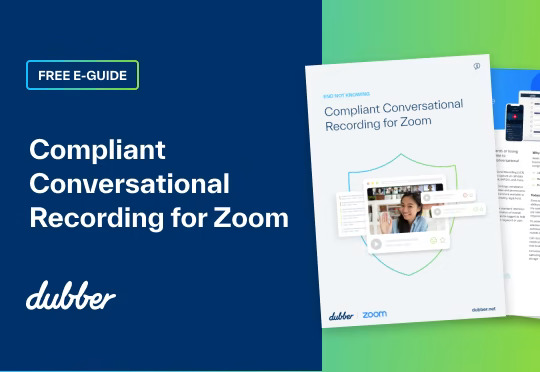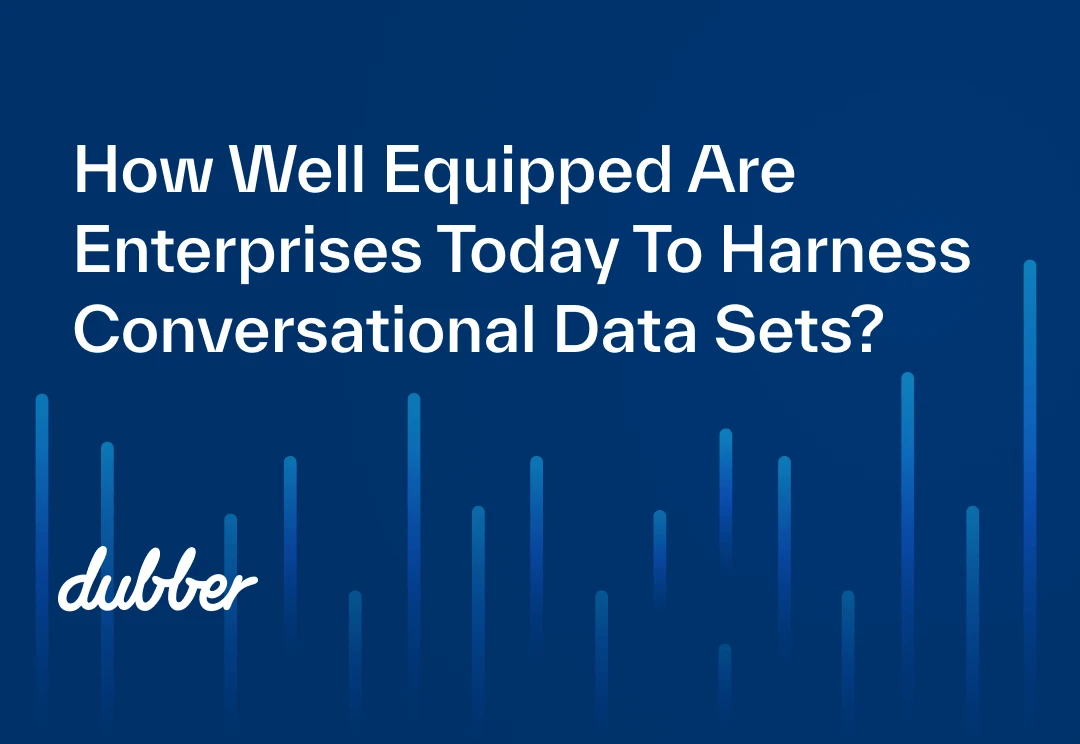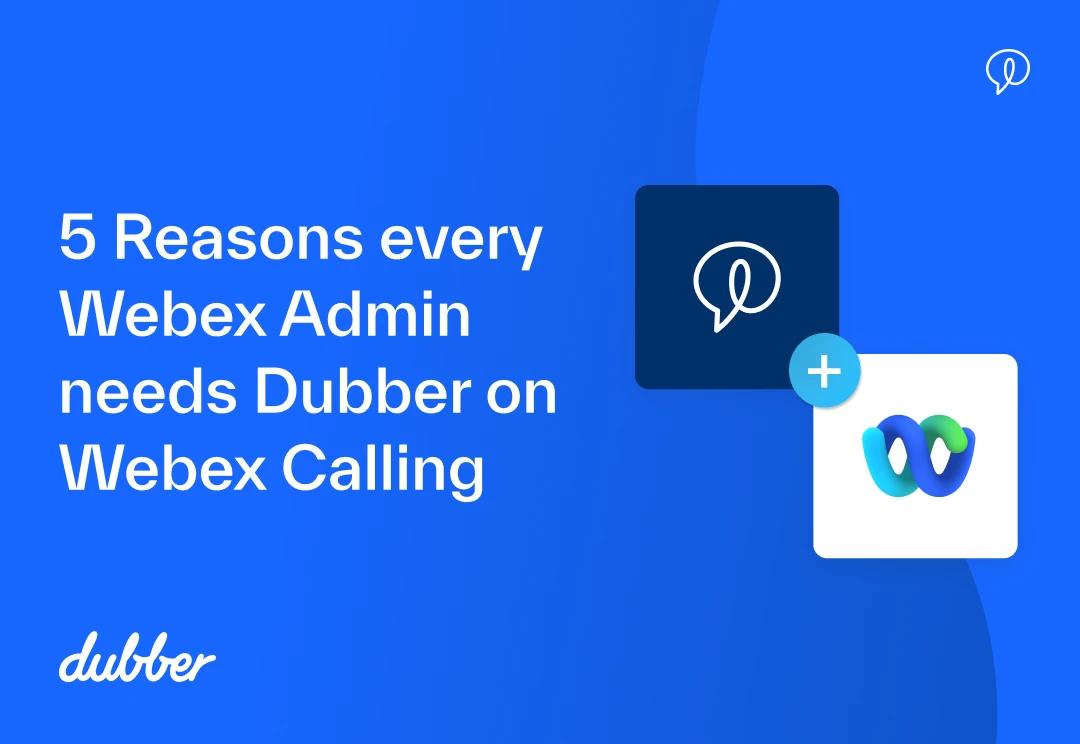
5 reasons why every Admin needs to turn on Dubber on Webex Calling
Dubber private and compliant cloud call recording is a native feature of Webex Calling, easily provisioned by any Webex Customer Administrator. More than half a million businesses and users (globally) have been using Dubber to record their crucial business conversations.
Are you the Control Hub Customer Admin?
Call recording insights are now considered imperative in achieving better business outcomes. Organisational leaders are looking for an edge, whether that’s better use of voice data or an increased ability to glean insights and intelligence from every business conversation.
Webex Calling customer administrators now play an essential role in enabling their business and users to unlock the value in every business interaction and power conversational intelligence at scale. With a predicted 75% of conversations being recorded by 2025 (Gartner), the trend is set to stick.
So how does Dubber on Webex Calling stand up against competitors and enable businesses of all sizes to achieve business outcomes? Here are five reasons.
5 reasons you need to switch on Dubber on Webex Calling for your business:
1. It’s FREE. Zero additional set-up cost. Zero additional hardware.
All Webex Calling users have access to Dubber’s enhanced cloud call recording capabilities at zero cost covered in their Webex Calling subscription. You can eliminate the cost of legacy call recording solutions today and simplify the pathway to unlocking the benefits of conversational insights and AI.
2. Natively embedded, instantly provisioned and intuitive onboarding
Dubber is the first multi-tenant call recording solution born in the cloud that’s natively embedded into Webex Calling. Dubber is securely interconnected to the Webex Cloud, making it simple, automated, and instant to switch on through Webex Control Hub. Admins have complete control and easy user management. Admins can effortlessly provision 1 or 1-thousand users or leverage dedicated customer success experts for support, including an intuitive concierge-level onboarding experience for admins.
3. Enhanced cloud call recording for business needs
All Control Hub admins need to do, is switch on call recording in Control Hub for their users. By doing that, they enable enhanced compliant cloud call recording capabilities for all Webex Calling users. All recordings are centralised in the Dubber portal with unlimited call recording, replay and download with 30-day storage. Dubber on Webex Calling users will have the ability to record, pause/resume and record on-demand on mobile or the Webex app (Desktop/mobile).
4. Centralise your voice data compliantly – Built for Hybrid (Webex Calling & Webex Dedicated Instance)
As an Admin, if you’re managing the transition from UCM on-premise to Webex Calling, you can use Dubber to meet all your call recording requirements. With Dubber, cloud call recording is compliant, secure and unifies your voice data in one platform. This approach enables a streamlined hybrid experience and management for you as the Administrator.
5. Dubber is a Cisco Solution Plus Partner
As a Cisco Solution Plus partner, Dubber has long been a trusted vendor across the Cisco ecosystem. For this reason, Cisco is Dubber’s first partner in the Dubber Foundation Partner program. The partnership unlocks for all Webex Calling & Webex Dedicated Instance customers a tailored, securely embedded and compliant cloud call recording, bringing a best of breed capability as a stand feature. For Webex Calling customers and customer Admins, the experience has been designed with ease of adoption and simplicity in mind. This makes Dubber the most complete recording solution available on all major Cisco and Webex platforms.
Interested in learning more?
Dubber on Webex Calling is making cloud call recording easier and more accessible for businesses to unlock the value of their rich conversational data. To learn more, get in touch with us here.
To compliment Dubber on Cisco, Dubber also has a range of solution packages purpose-built to solve Compliance, Customer, People and Revenue intelligence outcomes powered by Dubber’s voice-ai platform. Reach out here for a tailored demo.

